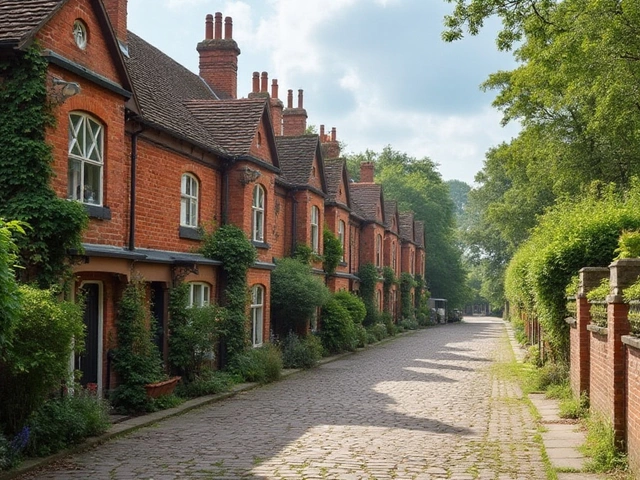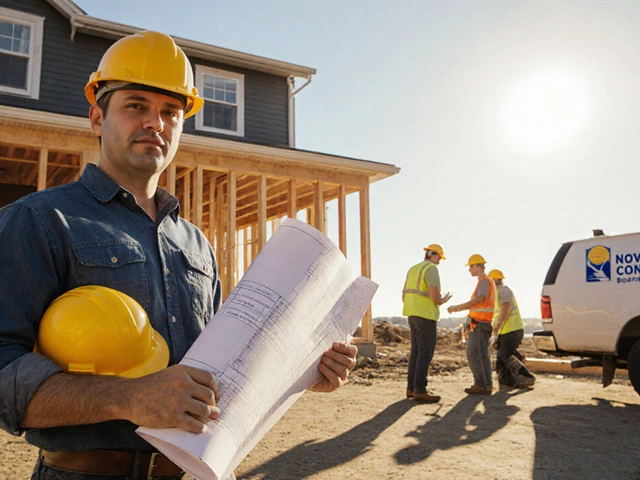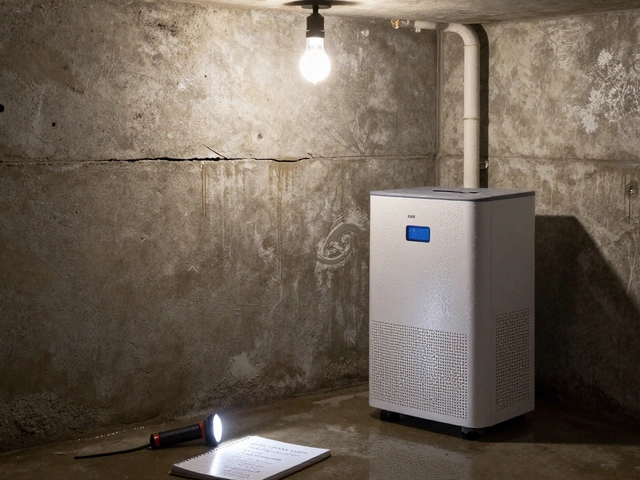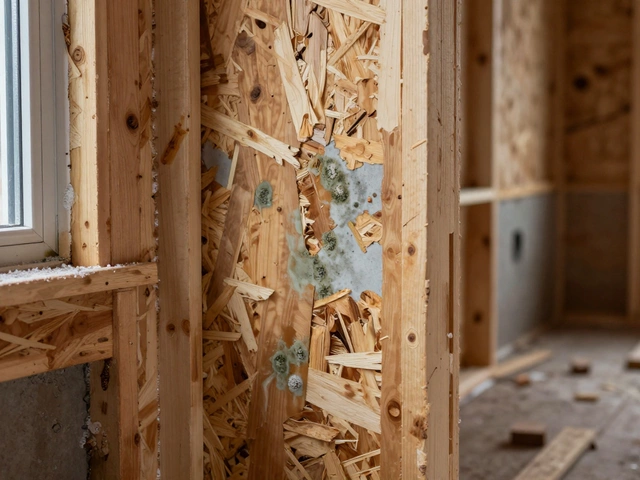We all know our homes should feel like a solid, reliable place. But sometimes, things start to go bump—literally. Got a door that doesn’t close properly anymore? Or maybe you’ve noticed cracks in your walls that weren’t there last year? Well, these could be signs that your house's foundation needs a little TLC.
First off, spotting them early can save you a bundle. Foundation issues often manifest as visible cracks, persistent doors that go ajar, or even floors that decide to get all bumpy. Noticing these things is your first step toward fixing them.
Why do these things happen? A bunch of reasons, really. Soil movement, water damage, or even just the simple passage of time could cause your house to lean or settle in strange ways.
And if you're thinking about fixing things up yourself, it’s wise to know your limits. Some problems might need just a bit of DIY elbow grease, but others might require a professional's touch. It's all about spotting the right symptom at the right time.
In later sections, we’ll chat about what causes these foundation issues, share some prevention tips to avoid them in the first place, and even tell a few real-life stories from folks who've been there—and how they got through it.
- Recognizing the Signs
- Common Causes of Foundation Problems
- Why It's Important to Act Fast
- When to DIY and When to Call a Pro
- Long-term Solutions and Prevention
- Real-life Stories and Lessons Learned
Recognizing the Signs
Catching foundation issues early can make all the difference in your repair bills and peace of mind. So, what should you be looking out for?
Visible Cracks
The most obvious sign of foundation issues is cracks in your walls or floors. Now, not all cracks are created equal. Small, hairline fractures might not mean much, but wider cracks especially those that run at an angle can be troublesome. You might find these around doors, windows, or in your basement. Keep an eye on them—if they grow, it's time to worry.
Doors That Won't Close
Ever notice a door that swings open on its own or won't latch? That might be your house telling you something’s up with the foundation. When doors start getting stubborn or misaligned, it’s more than a minor annoyance.
Uneven Floors
Uneven or sloping floors are another classic hint. If you find marbles rolling across the room, you might have a foundation problem. Sometimes you can feel this just by walking on a slope in the floor. This can happen due to house settling and creates a noticeable imbalance.
Gaps in Frames
Check around window and door frames. Gaps or spaces where there shouldn't be might mean something's amiss with your home foundation. If you can stick a nickel in the frame gaps, we're looking at potential issues.
Water Pooling
Next, if water is pooling around the perimeter of your house after rainfall, it isn’t normal. This can lead to issues with the foundation as water soaks into the soil, making it expand and contract. Keep an eye out after a rainstorm to see water patterns around your house.
Nail Pops
Those tiny circular cracks or bulges on your walls are nail pops. Recognize them as signs your house might be shifting. Though they seem harmless, if paired with some of the other signs mentioned, the pops can signal foundation issues.
These signs can pop up a little at a time, but if you notice a few of them together, don’t ignore it. Pay attention to what's going on with your house. Keep track of these changes, and if in doubt, call a foundation repair expert to take a closer look.
Common Causes of Foundation Problems
Understanding what causes foundation issues in the first place can help you get a grip on what’s going on beneath your home. There are a few usual suspects that tend to pop up time and time again.
Soil Movement
Your home sits on the ground, so what happens below is crucial. Soil expansion and contraction are one of the biggest culprits. Certain soil types, like clay, expand when wet and shrink when dry. This push-and-pull dance can create havoc over time, causing your foundation to shift.
Water Damage
Water's got to go somewhere, and if it's not draining properly around your foundation, problems can arise. Heavy rains or poor drainage systems might lead to water pooling around your home, seeping into the soil, and messing with its stability. That's why it's important to check that gutters and downspouts are working right.
Poor Construction
Not all homes are constructed with the same level of care. If the foundation wasn’t initially built with strong materials or if short-cuts were taken, it may lead to issues sooner rather than later. The old saying "you get what you pay for" can definitely ring true here.
Tree Roots
Nature's got its way of creeping in, and tree roots are another potential problem. Those roots can grow wide and strong, and if they make their way underneath your foundation, they can exert pressure that might cause cracking or movement.
Seasonal Changes
Shifts in weather and temperature can also be a sneaky factor. Winters might cause the ground to freeze and expand, while summers see the soil dry out and contract. This back-and-forth isn't great for maintaining stability below your home.
Understanding these causes is the first step in addressing and preventing foundation issues. Sometimes, recognizing the early signs can save you from major hassle (and cash) down the road. It’s about keeping an eye on how your house is feeling and looking out for the tell-tale signs we talked about earlier.
Why It's Important to Act Fast
When it comes to spotting foundation issues, time isn't on your side. Many think they can just 'watch and wait,' but that can lead to some serious—and seriously expensive—problems down the line. So, why should you act quickly?
Escalating Repair Costs
The longer you wait, the more those little cracks can turn into big headaches. Minor fixes like sealing up small fractures are a lot cheaper than more extensive work like underpinning or repairing a full-blown structural issue. By catching them early, you can keep repair costs from skyrocketing.
Preventing Additional Damage
Think about water damage. If foundation cracks allow water to seep in, you're not just dealing with foundation repair; you might be looking at mold, damaged walls, or problems with your electrical wiring. Water is sneaky and can cause a whole chain reaction of issues.
Protecting Home Value
A home with known foundation repair issues isn't exactly buyer-friendly. If you're planning to sell, having a solid foundation reduces buyers' room for negotiation. You wouldn't want the value of your biggest asset dropping because you ignored those signs.
Avoiding Safety Risks
At the end of the day, your family's safety is number one. Foundation problems may lead to structural instability. Most homes can handle a bit of settling, but extensive issues might mean your house isn't as safe as you think.
If your house is showing signs of foundation issues, don't treat it like that avocado on the counter you're waiting to ripen. Get on it before it turns bad.

When to DIY and When to Call a Pro
So, you've noticed some potential foundation issues in your home. Your first instinct might be to grab your toolbox and tackle the problem right away. But before you do, it’s crucial to know when you can go the DIY route and when it’s time to call in the pros.
DIY: The Easy Fixes
There are some situations where a little DIY can actually be pretty effective. If you notice small hairline cracks (we're talking anything less than 1/8 of an inch), you can usually handle these with a bit of patching. Look for specific crack filler products at the hardware store. And if your home has shifted slightly, you might only need to adjust the doors or windows to improve their alignment.
- Fill minor cracks with ready-mix concrete crack filler.
- Realign doors by adjusting hinges or sanding off edges.
- Apply weather stripping for windows that seem a bit off-kilter.
Call in the Pros: Big Problems Need Big Fixes
Let's chat about the bigger stuff—those it's-gonna-fixed-right-or-bust kind of issues. In cases where cracks are wider than 1/8 of an inch or seem to be spreading, it's best to get a professional in. Wider cracks can indicate significant settling or other structural problems that a quick patch won’t solve.
Also, if your floors have gone wonky or water’s pooling around the foundation, a specialist is definitely the way to go. Making sure the problem is fixed correctly the first time around will likely save you money in the long run.
- Noticeable large wall cracks.
- Persistent uneven floors or surfaces.
- Water pooling along the foundation.
Here's a stat for you: Professional repair services often report that fixing unchecked problems can cost homeowners between $5,000 to $20,000, while early intervention usually keeps costs down around the $500-$2,000 range.
The moral of the story here? Knowing the extent of the problem and your own limitations can make a huge difference. Don’t hesitate to get an expert opinion when needed because, after all, your home is worth it!
Long-term Solutions and Prevention
So, you've spotted the signs of foundation issues, but what's next? Well, it's time to think about long-term solutions and how to prevent future headaches. The key here is being proactive, which can save you a lot of stress—and cash—in the long run.
Soil and Water Management
A big part of preventing foundation problems lies in how you handle the soil and water around your home. If water collects near your foundation, you're asking for trouble.
- Keep Gutters Clean and Functional: Ensure your gutters direct water away from the house. Clogged gutters can lead to overflow that pools around your foundation.
- Sloping Ground Away from the Foundation: The ground should slope away at least 6 inches over the first 10 feet to keep water moving away from your home.
- Install a French Drain: This can be a lifesaver if your property naturally retains water. It redirects moisture away from your foundation.
Regular Inspections
You don't need a professional degree for regular check-ups. Keeping an eye on things will help catch issues while they're minors.
- Check for Cracks in Both Interior and Exterior Walls: Small cracks are normal but if they widen, it might signal a problem.
- Monitor Doors and Windows: Sticking doors or windows could tell you your foundation is shifting.
Use of Root Barriers
Roots from large trees and shrubs can wreak havoc on your home foundation. Root barriers keep the roots of plants away from your foundation without cutting them down, preserving your greenery while protecting your home.
Maintain Consistent Moisture Levels
Plants need watering—and your home might too, especially in dry climates. But be careful with this one!
- Use soaker hoses during dry months: This keeps the soil evenly moist around your foundation, reducing the risk of problems due to soil shrinkage.
Consider Soil Stabilization
If the soil is particularly problematic, soil stabilization techniques could provide a longer-lasting fix.
With a bit of attention and these preventative measures, you can keep that home foundation solid for years to come. Staying informed and being prepared is your best defense.
Real-life Stories and Lessons Learned
It’s one thing to talk about foundation issues, but hearing from folks who've been through the wringer can really drive home the urgency of the matter. Let’s dive into a couple of stories that might just help you avoid a similar headache.
Cracks Revealed Hidden Problems
Picture this: a lovely family in Houston started noticing some cracks on their living room wall. The Smiths didn't think much of it at first. They thought it was just the house settling. But after a particularly rainy spring, the cracks widened and everything became clear. Their home was slowly sinking due to unstable soil beneath the foundation.
What can you learn from the Smiths? Don't overlook those small signs. They might save you from a more significant problem down the line. As soon as something doesn't seem right, especially if there's newly developed rain or water pooling around your foundation, it could be time to call a foundation repair professional.
When Cheaper Isn’t Better
In another case, the Johnson family opted for a quick DIY fix when noticing their bedroom door wouldn't shut correctly. They installed a new latch, thinking it was just an old frame issue. Turns out, the problem ran deeper—literally. The shifting foundation was the culprit.
When they finally brought in a professional, the repairs were way more costly because of the delay. The lesson? While a DIY approach might seem appealing to save money, understanding when to tap into expert help for serious issues is crucial.
| City | Average Cost of Foundation Repair |
|---|---|
| Houston | $5,000 |
| Dallas | $4,500 |
| Los Angeles | $6,000 |
According to a report in 2024, the average cost of foundation repair can range widely depending on location, illustrated in the table above. Address issues early to avoid these hefty expenses.
Take Preventive Steps
One family found success by being proactive. After moving into their new home in Boulder, they immediately installed a proper drainage system and regularly checked for water pooling around the foundation. Ten years later, their foundation remains rock-solid without any major repair needs.
What’s the takeaway? Regular maintenance and preventive measures can go a long way in keeping your home stable and saving you significant costs down the road.







